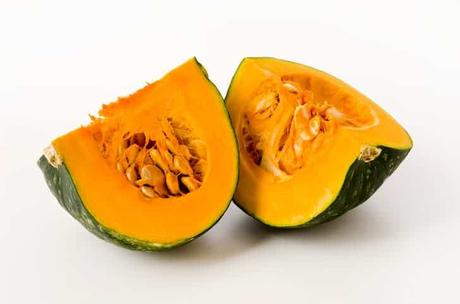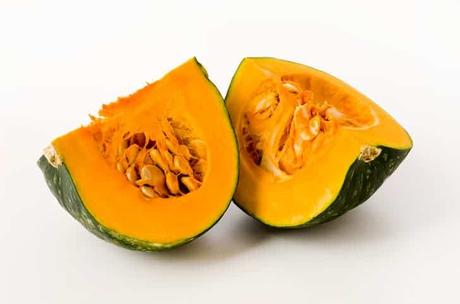A Complete Guide to Grow Kabocha Squash
Nowadays, vegetables are gaining popularity because of containing an intense amount of essential nutrients. Kabocha squash is one of those popular vegetables that contain a lot of vitamins and other minerals, and people grow Kabocha squash in their gardens in a massive quantity.
They prefer growing vegetables in their gardens and even in kitchens in urban areas. This pumpkin-like fruit is very popular among the general people because of its fascinating taste, texture, and health benefits.

In this guideline to grow Kabocha, we will highlight the followings:
- What is Kabocha squash?
- How to Grow Kabocha squash?
- Step-by-step guide for growing Kabocha squash
- Is it possible to eat the skin of these squash?
- Common uses of these vegetables
- Differences between Kabocha and Acorn squash
What is Kabocha squash?
Kabocha squash is commonly recognized as a Japanese pumpkin, and amazingly, this vegetable has been awarded because of its sweet taste, beautiful appearance, and health benefits. If you love to eat sweet potatoes, you will surely love Kabocha squash.
Remember that the Japanese people use this vegetable as a staple ingredient in their cuisines. The appearance can be somewhat similar to the short pumpkins, but the taste is like sweet potatoes.
People across the world like this squash because of its delicious taste, but they rarely know about its multiple health benefits. Like other pumpkins, Kobocha’s flesh is loaded with anti-oxidant, named beta-carotene, and human bodies translate this compound to Vitamin A, which is vision-protecting. In addition, researches have also proved that the skin of this vegetable is rich in fiber.
How to Grow Kabocha Squash?
Growing Kabocha squash is very easy, and all that you need to do is to make the conditions favorable for its growth. Many want to grow these vegetables indoor, but we recommend you grow them outside because of a few reasons.
This plant needs a lot of space for spreading, and when the fruit appears, space plays a vital role in development. The weight of the squash ranges between 2 to 3 pounds, and this is why it will be better for growing them outside. These plants thrive well once it receives an adequate amount of nutrients, and they grow well throughout the summer and spring and the fruits become fully matured in fall.
You can harvest them once those fruits reach the ideal size. Each of these plants may produce an average of four squash if the vine is average in size. However, larger vines produce more of these amazing vegetables. This is why you should provide adequate space to facilitate the growth and to receive more squashes
To grow Kabocha squash, you must know their favorable conditions for optimizing the growth.
What are the Favorable Conditions For Growing Kabocha squash?
Soil
The grower must make sure that the soil is fertile and well-drained. The pH should be neutral (6-6.8). It is better to use plastic mulch to accelerate the germination rate. Using cocopeat, vermicompost, decomposed cow dung, or other organic materials can be a good choice to maintain soil health and to retain moisture.
Nutrient Requirement
The nutrient requirement of this plant is not different than other vegetable plants. You need to apply NPK fertilizer to the soil at a similar rate. The grower can easily identify when there is a nutrient shortage in the soil. When the leaves begin to wilt despite plenty of water in the soil, it indicates that fertilization is necessary. Remember that these plants are heavy feeders. Therefore, apply fertilizer once every two weeks.
Water Requirement
Heavy feeders like these vegetables consume a lot of water. Surely, the water requirement is affected because of the temperature, humidity, and soil properties. If the soil is sandy, the water will be lost, and you will need to supply more water. Similarly, a higher temperature will affect the transpiration as well as the evaporation.
Sunlight and Temperature
These plants need to be placed in a sunny area where they can receive approximately six hours of consistent sunlight, and additional light is better. Be careful about the temperature, if the weather is too hot, these plants can droop. Though it is a sign of conservation of its resources, you need to add a shade if they don’t go back to their previous stages after the evening.
We assume that the grower can easily provide these facilities to their plants. So, now it is time to discuss the procedure of growing Kabocha squash.
Step-by-step Guide For Growing Kabocha Squash
To start growing this Japanese pumpkin in the land, you need to prepare everything in the beginning.
Things that are required
- Seeds of Kabocha squash (This is the hardest part to grow this vegetable because the seeds of this pumpkin are very rare. It is often said that the taste of these seeds is similar to the nuts)
- Organic materials like coco peat, decomposed cow dung, mulch, etc.
- NPK fertilizer
- Pesticides
Once the aforementioned four essential things are ready, you can begin the process.
Step 1: Prepare the seedbed for germination
Germination of these seeds is easy if one can provide a favorable condition. For faster germination, the grower can follow the wet tissue method. For standard germination, he should prepare a seedbed using coco peat, sorghum, peat moss, or other organic materials, which can retain the water well.
Remember that these seeds should be germinated inside the house because the temperature, humidity, and moisture are in favorable condition inside the room compared to the outside. It is better to start putting the seeds a month before the spring. Moist the medium slowly and check the moisture too often to facilitate the germination process. Once the seedlings are ready, they can be transferred to the soil.
Step 2: Soil preparation and fertilization
Soil preparation is an important part of this process because this media will regulate the nutrient dynamics and water uptake. If the soil is too sandy, you should mix clay soil with it. After mixing properly, add organic materials, which will enhance the capacity to retain more water. That’s all. Soil preparation is done, and now it is time to apply fertilizer.
As we mentioned earlier that these plants are heavy-feeders, the grower must supply an adequate amount of fertilizer. Since soil contains micronutrients, it isn’t compulsory to add micronutrients like manganese, iron, boron, and so on. NPK fertilizer is recommended, and if anybody wants to increase the growth rate, he can add other nutrients including zinc, calcium, magnesium, and others. Feed these plants with NPK fertilizer every two weeks.
Step 3: Water the plants
We can’t tell you the depth of water that needs to be applied each week because the water requirement depends on the evaporation and transpiration rate. Make sure that the soil surface remains moist (but not wet) because too much water will cause root rotting and kill the plants.
Step 4: Watch for the insects
There are a few common yet deadly pests that can ruin all the Kabocha squash’s plants. Some of these common insects are squash bugs, vine borers, and cucumber beetles. During the young ages, you have to take all the preventive measures to protect them from those insects.
Fortunately, anybody can see these bugs with naked eyes or by a magnifying glass. The eggs of the squash bugs can be found underneath the leaves and can be crushed by hands. To control all these insects, the best way is to use garlic powder or garlic juice, and neem oil. Spray the neem oil or garlic juice in the leaves to eliminate the bugs and destroy the eggs.
Step 5: Harvest the Kabocha squash
The plant will grow throughout the year, and the fruit will start appearing in the early fall. You will notice that the stem around the fruit will begin to dry and shrivel. The grower should harvest the fruit as soon as the fruit’s skin turns darker green and the stems become brown and harden.
Simply cut the squash leaving a minimum of two inches of the stem. Don’t pick the fruit yet. Allow it to stay on the ground for an extra week.
Is it Possible to Eat the Skin of Kabocha Squash?
Kabocha is an excellent source of Vitamin A and beta-carotene. Interestingly, one can also eat the skin of this vegetable because research has proved that the skin of the squashes is rich in fiber material, which will fight constipation.
Common Uses of Kabocha Squash
This vegetable can be used in most food items because of its amazing flavor. It is said that the flavor closely resembles the flavor of sweet potato. One can eat the entire squash, even the greenish skin because of its fiber content.
Kabocha squash is mainly used to prepare different types of delicious dishes including –
- Roasted Kabocha
- Gluten-free squash gnocchi
- Kabocha squash soup
- Squash salad
- Kabocha squash congee
- Chunky curried squash dip
Roasted Kabocha squash, among this list, is the most popular because many people enjoy the roasted and crispy version of this fruit.
First of all, wash the fruit and the remaining dirt on the skin, and after that, use a sharp knife to cut it in two half. Take out the seeds with a spoon and wash them. You can save these seeds for the next year by planting more plants.
What are the Differences Between Kabocha and Acorn Squash?
Both Kabocha and Acorn are two varieties of squashes, but interestingly, people find it hard enough to differentiate Kabocha and Acorn squash. As both of these varieties are somewhat similar, people hardly realize the difference. Don’t worry because we will help our readers to identify the difference between them.
Acorn Squash
The easiest way to identify Acorn is its shape because it is similar to Acorn. These squashes are greenish and have beautiful orange flesh, and the skin is pretty thick. One can serve them either by peeling off the skin or simply cutting them into pieces. The triangular shape will help you to identify Acorn fast.
Kabocha
These squashes are also called the Japanese pumpkin. You can easily identify it by observing its shape. It has a round shape and has greenish skin and is marked with several uneven stripes. Like the Acorn, Kabocha can be utilized to prepare delicious dishes as well, and one can use it in any recipe.
Therefore, it is quite hard to differentiate these two fruits from the taste. Observing the shape is the perfect way to recognize these two vegetables.
In this complete guideline, we have discussed everything in detail. This article will help you to understand – how to grow Kabocha squash in the garden. Remember that many people are growing these vegetables for commercial purposes. So, anybody can grow these vegetables and sell them in the market at a higher price.
References:
https://premeditatedleftovers.com/gardening/how-to-grow-kabocha-squash/
https://www.foodandwine.com/vegetables/squash-gourds/extremely-easy-delicious-recipes-kabocha-squash


